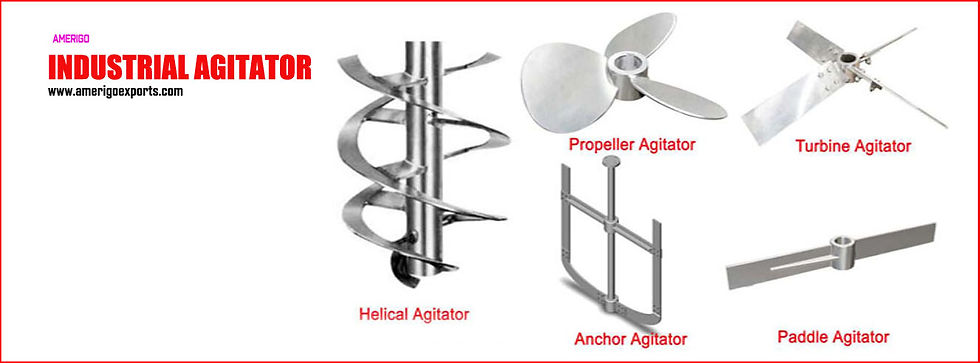Types of FRP and GRP Tanks
- Amerigo Exports
- Oct 17, 2023
- 2 min read
FRP (Fiber-Reinforced Plastic) and GRP (Glass-Reinforced Plastic) tanks come in various types, each designed to meet specific industrial or storage needs. Here are some common types of FRP/GRP tanks:
Storage Tanks: These are the most common type of FRP/GRP tanks and are used for the storage of various liquids, chemicals, and even food products. They can range in size from small to very large, depending on the intended use.
Chemical Tanks: Specifically designed to store and transport a wide range of corrosive and hazardous chemicals. They are resistant to corrosion and provide a safe storage solution for chemical processing industries.
Water Tanks: These are used for storing potable water, wastewater, and other non-corrosive liquids. They are commonly used in residential, commercial, and industrial applications, including fire protection systems and municipal water storage.
Septic Tanks: Designed to collect and treat sewage and wastewater. They are commonly used in residential and rural areas that do not have access to centralized sewage systems.
Oil Storage Tanks: These tanks are designed to store various types of oils, such as crude oil, fuel oil, and lubricating oils. They are essential in industries like oil refineries and power generation.
Pressure Tanks: Used to store liquids under pressure, these tanks are often employed in industrial processes that require a constant and controlled supply of liquids.
Double-Wall Tanks: These tanks have an additional layer for added safety. The inner layer stores the liquid, while the outer layer provides an extra level of containment to prevent leaks in case of a breach in the inner layer. They are commonly used for storing hazardous or environmentally sensitive substances.
Underground Tanks: Designed to be buried underground, these tanks are often used for wastewater storage, rainwater harvesting, and in areas where above-ground tanks may not be practical.
Horizontal Tanks: These tanks have a horizontal orientation and are commonly used in applications where height restrictions are a concern or when the storage of liquids requires a specific orientation.
Vertical Tanks: Vertical tanks have a vertical orientation and are used when floor space is limited. They are commonly seen in industries where space is a premium.
FRP/GRP Silos: Silos are tall, cylindrical structures used for bulk storage of granular materials, such as grains, cement, or plastics. FRP/GRP silos offer corrosion resistance and durability.
Transport Tanks: These are designed for the transportation of liquids and chemicals. They are often mounted on trucks or trailers for easy mobility.
Rectangular Tanks: These tanks have a rectangular shape and are used when space constraints dictate a particular form factor.
Custom Tanks: Manufacturers can create custom FRP/GRP tanks to meet the unique needs of specific industries and applications. Customization can involve varying capacities, shapes, and features.
The choice of FRP/GRP tank type depends on the specific requirements of the application, including the type of liquid being stored, the environmental conditions, size constraints, and safety considerations. Each type of tank is engineered to provide corrosion resistance, durability, and structural integrity.





Comments